Standing and sitting is a regular part of our daily routine, but many people find that it is hard to stand up after sitting. Sometimes this is simply because they have been in the same place for too long. But, there is often a more serious problem to consider.
You don’t want to leave the situation as it is either. If standing up is difficult, struggling and straining could make things even worse.
Thankfully, there are ways to make things easier.
In this post, we’re talking about a range of techniques, tools, and other approaches that make it much easier to get up after you’ve been sitting – regardless of why you’re struggling.
Ways to Make Standing Up Easier
1. Talk to a Doctor
There are many possible causes for sitting and standing problems, including rheumatoid arthritis, osteoarthritis, and other health conditions. The issue may also be related to age-related muscle loss, especially for seniors who don’t get enough resistance exercise or do not consume enough protein
A doctor will be able to determine the causes of the problems, along with ways to resolve them. Possible approaches include:
- Medication. If the problem is related to a health condition, medication may be able to ease some of the symptoms. This is also true if pain is one reason that you are having difficulties.
- Diet or lifestyle change. Changes to your diet and lifestyle can often improve health. This is especially significant for people who are overweight. Likewise, inflammation can sometimes be decreased through dietary changes.
- Physiotherapy. Physiotherapy is an approach that focuses on restoring function and movement. It can be very helpful in many situations and some physiotherapists will come to the home.
- Exercises. A doctor or physiotherapist may be able to teach you other exercises as well, ones that are specific to your body and to your needs. Hip exercises are a great example, as paying attention to your hip health is especially important as you age.
- Strategies and tools. A doctor may also recommend approaches and tools that make standing up easier (including some discussed later in this post). For example, people with knee pain may need to stand in ways that reduce the pressure on their knees.
In many cases, support and treatment can make it much easier to sit and stand. The right treatment could even resolve the problem entirely. But, this won’t always happen. After all, many conditions are not curable.
2. Change Your Techniques
There’s little need to think about how you get up and down when you’re young. Many of us simply follow the same techniques as we age, which is a shame, as they’re not always the best ones for our bodies.
Changing the way that you get up can also help to reduce any issues.
The video below is particularly good, as this highlights forward-focused movements that make it much easier to stand without the normal stress and strain.
The shift in movement isn’t dramatic here and doesn’t look like a big deal. Yet, the physical sensations of getting up this way really are much better. Why not try it for yourself? There’s nothing to lose.
The same video creator offers a couple of videos that focus on how to get down to the floor and back up. One of those is below. This is important for seniors too, especially if they’ve fallen.
The video below focuses on getting up from a chair as well. It’s a similar technique, but is explained differently
3. Exercise Regularly, Particularly Resistance Exercise
Exercise is critical for health in many different ways. Simply staying fit and active can help improve longevity and reduce the risk of health problems. Resistance exercises are also powerful, as they help to strengthen muscles.
An additional aspect is simply getting up often.
Sitting for a long time isn’t good for the body. Regularly getting up and moving around helps to restore blood flow and gets your muscles working. Doing so is also simply good practice. If nothing else, it can help make the process of getting up and sitting down feel less overwhelming.
There are also some specific exercises that can help strengthen the muscles you use when getting up from a seated position. The video below shows a good place to get started.
The idea here is mostly just sitting and standing, with a strong focus on using the right muscles. The process also helps to build confidence and can make the process easier over time.
A doctor or physiotherapist may be able to teach you other exercises as well, ones that are specific to your body and to your needs.
4. Adjust the Home Environment
The first three approaches can help decrease the challenges you experience. But, you may also need to make changes to your living environment. These are things that will make sitting and standing easier.
Increase the Height of Chairs
One trick is to raise the height of chairs that you already own. Furniture risers are the simplest approach.
You can see these in the image below (they’re the black boxes).
You could raise the furniture yourself using things around the house, like books or pieces of wood. Honestly though, manufactured furniture raisers are a better choice.
- They’re not expensive (you can often get 8 for less than $20)
- Many have anti-slip pads for the top and the bottom
- Some are stackable, making it easy to get the exact height you need
- The edges on the risers reduce the chance that the furniture will move around
- The products are often manufactured to hold large weights
- You can find multiple colors and styles, making it easy to match your furniture
- In contrast, odds and ends from home will tend to be less safe and are harder to get right
There are many furniture risers to choose from, so why not shop around a little? Pay close attention to the product description so that you find the right size, weight capacity, and style for your needs.
Choose The Right Seats
Sometimes the solution is as simple as choosing the right chairs.
For example, some sofas have a relatively high seat and are firm. Others have a lower seat or are ones where you almost sink into them. The right height and firmness make a huge difference in how difficult or easy the chair is to get out of.
The same is true for dining chairs, armchairs, and other types of chairs.
Here are some general things to look for:
- Height. Make sure the chair is tall enough that it is easy to get up from, but not so tall that it’s hard to use. Ideally, the person who struggles with getting up should test the chair, otherwise you’ll just be guessing.
- Firmness. It’s easier to get out of a firm chair than a soft one. Of course, firm chairs can be less comfortable, so there’s a tradeoff.
- Arms. Chairs with arms can be much easier to get out of, as the arms can be used as leverage. But, you need to make sure that the arms are sturdy and can stand up to the body weight of the person using it.
- Size. Getting the chair size right is important too. This is especially relevant for chairs with arms if the senior is on the large side. You don’t want to add any more difficulty to the process of getting up and down.
Choose a Full Lift Chair
Lift chairs can be the ultimate solution. These are powered and are designed to make getting up much easier. They are particularly good for seniors who spend a long time sitting in the same chair. Check out our guide on what to look for in a lift chair or system, as well as our recommendations.
The chairs can be expensive, so it’s worth shopping around to find a good product. Look closely at the reviews to make sure the chair does what it claims to. The specs matter too. You want a chair that will fit into your space and is strong enough to lift the senior’s weight.
Then there’s the warranty. Make sure that you’re covered if the chair stops working. Many chairs have different warranties for different features, so read the fine print carefully.
The chair below is a popular choice.
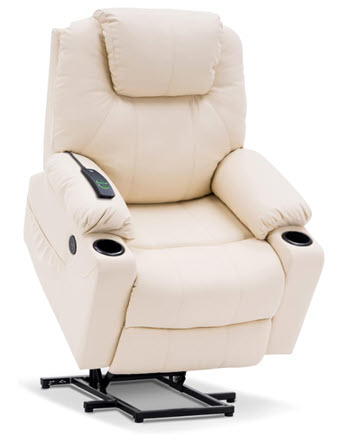
This solution gives you a single chair, so it won’t help in other parts of the house. Still, you could use a combination of the approaches that we’ve highlighted.
Making general safety changes is also important. For example, try to avoid any fall hazards, including cords, rugs that easily move and low tables. Make sure that all chairs are sturdy and aren’t going to move when someone is trying to get into or out of them.
Install Rails
In some cases, installing rails or bars can be helpful too. This probably won’t be relevant in your living room, but grab bars can be powerful in the bathroom.
Think about places where chairs are close to the wall and aren’t likely to be moved.
5. Use Assist Tools
Assist tools tend to give you more leverage for getting up. They come in a range of designs and can often be used with your own furniture.
One example is the Universal Stand Assist from Able Life, which you can see in the video below. This a metal structure that can be inserted under the cushions of your couch or chair to give you handles for getting up with ease. It is adjustable too, so you can make it match the height of your seat.
There are other designs too, like this product, which gives you a tray table when you want it and has a handle to make standing easier.
Another style sometimes called a bed cane, bed rail or bed assist tool. There are many designs, but the general idea is to give you something to grab when getting out of bed.
Some people skip the specialized tools and use their own items to help them when it is hard to stand up after sitting. For example, you can use a walker or cane for extra leverage. Just make sure that these are firm on the ground and aren’t going to slip.
6. Try Lifting Products
You can also find items that give people a push to get them out of the chair. For example, the Carex brand has a range of different products. Some are self powdered, while others are electrically powered instead.
You can find the products here and the video below shows how they work.
This style is more finicky than furniture raisers, as you need to rely on the mechanical components working like they should. The weight capacity is limited too. You’re looking at up to 300 lbs for the best models, but some of the other are much lower (including some that support less than 200 lbs).
Reviews for this type of product tend to be mixed. Some people find that the raisers work perfectly, while others say they stopped working too soon or that the product isn’t comfortable to sit on.
Still, you do get a portable product that can be moved from one piece of furniture to the next. You could even bring the cushion with you when going out (although it is on the bulky side).
7. Pay Attention to Seating
Even if it’s hard to stand up after sitting, you don’t always need to buy new products. Sometimes you simply need to pay attention to where you sit.
This is particularly true when you’re out and about – as you won’t be able to control the seating available.
- Avoid chairs that are low. As a general rule, the higher the seat, the easier it will be to get out of the chair.
- Look for cushions. These can help increase the height you’re sitting at, making it easier to get up and down. You might even choose to bring your own.
- Choose chairs with arms. The arms on a chair can make it much easier to get into and out of, especially if you’re struggling. Even if you’re not, the arms make the process simpler, which is always a good thing.
- Make sure the chair is sturdy. If you’re worried about getting back up, a wobbly chair is the last thing you want. Look for chairs that are well-grounded and seem to be reliable.
- Focus on harder seats. In particular, you want to avoid anything you’re likely to sink into (including armchairs and couches). These are often deceptively low or soft.
- Look for environmental supports. You can also look for things in the environment to help you. For example, if the chair is next to a wall, you may be able to get additional support from the wall. This will strongly depend on your situation and what you need. But, looking at the environment around where you will be sitting can certainly help.
8. Communicate
The final thing we want to mention is simply communicating. You don’t need to tell everyone that you’re having trouble with getting up after sitting. But, it is often useful to tell those closest to you.
If you’re embarrassed by the issue, you might simply say that you need a specific type of chair (like one with arms). This alone can make a huge difference and may improve social situations considerably.
The Role of Caregivers
You don’t need to be the person struggling to apply these solutions. You might use some of them for a loved one instead.
The best approach will depend on a few factors, like your living situation, what your family member thinks about special chairs or equipment, and your finances.
After all, many families won’t be able to afford expensive chairs, even if these could make life much easier. Some of the simpler options could be much more powerful, like furniture risers. These increase the height of furniture without changing anything else.
But, even if home changes are enough, it’s still important to talk to a doctor about any sitting and standing challenges. There may be underlying medical issues that are contributing to the problems.
Caregivers can also help their family member get up and down. However, this shouldn’t be your go-to approach. If the senior can safely get up from sitting on their own, then they often should continue to do so, even if it’s difficult. Doing so helps them to remain independent and keeps their body as mobile as possible.
Why Talk About Standing Up After Sitting?
So, why have ween been talking about whether it’s hard to stand up after sitting? The problem might seem simple at first glance – just meaning that getting up takes longer or is more challenging.
There are two main concerns. One is that struggling to get up might be an indication of a serious health problem that may need to be addressed. The second is that these challenges can have impacts on other areas of your life too. For example:
- Difficulty with rising from a seat can mean that people get up less often. This can lead to less exercise, which often decreases mobility over time. The effect can be subtle too. You mightn’t even notice it at first. But, if you’re getting up less often, then you’re giving those muscles less exercise and the process isn’t going get easier on its own.
- If you struggle to get up and down, you might be less willing to go out, due to the risk of embarrassment or concern that there will not be appropriate chairs. This increases social isolation and generally isn’t good for health.
- Problems getting out of a chair combined with bladder issues (including incontinence) can increase the risk of accidents.
- People who struggle to sit and/or stand may find it difficult to get out of bed or to use the bathroom without assistance.
This issue isn’t limited to seniors either. Many caregivers also find that they struggle to stand after they’ve been sitting. Even if the issue isn’t severe, it can take its toll.
That’s why this post has looked at a variety of products (some of our favorites are featured in the box below. There are many other good options on Amazon too.
Some might seem expensive, but the benefits make them well worth the price. After all, making sure you can get up down without a problem doesn’t just make life easier. It protects your health in the long term and means less strain on your joints.
This post contains a sponsored link
Feeling Overwhelmed?
Check out our Caregiving Consulting service for personalized support and guidance.

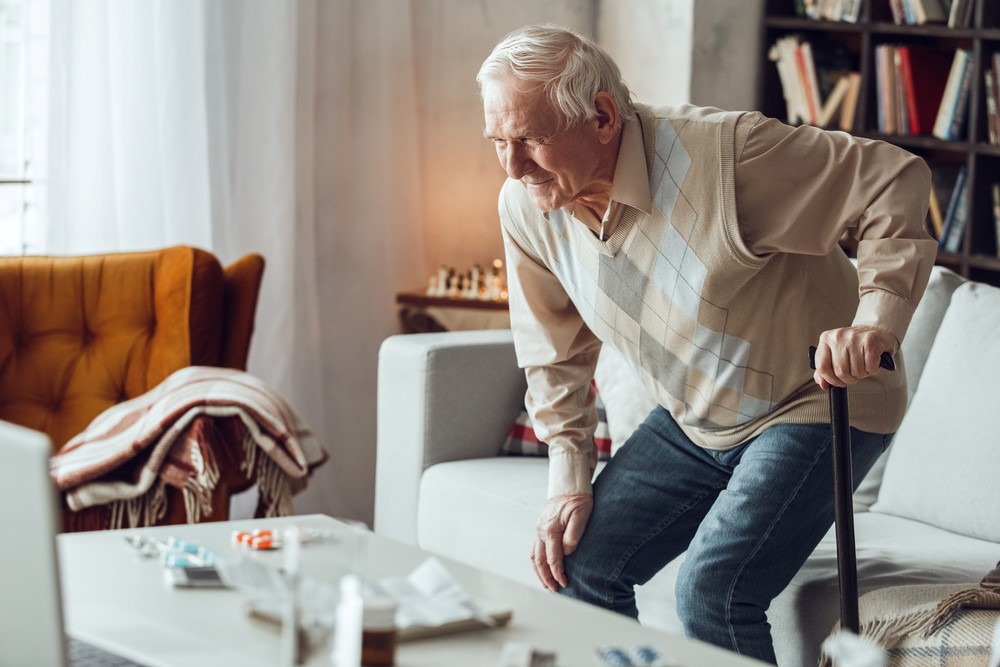
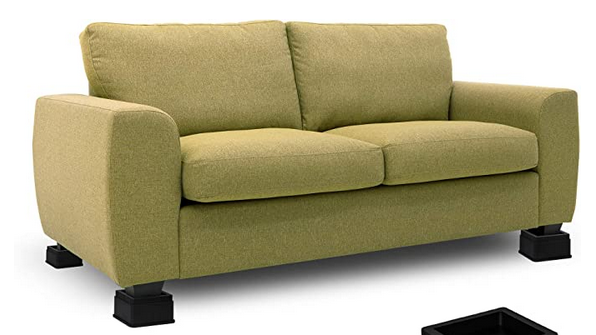
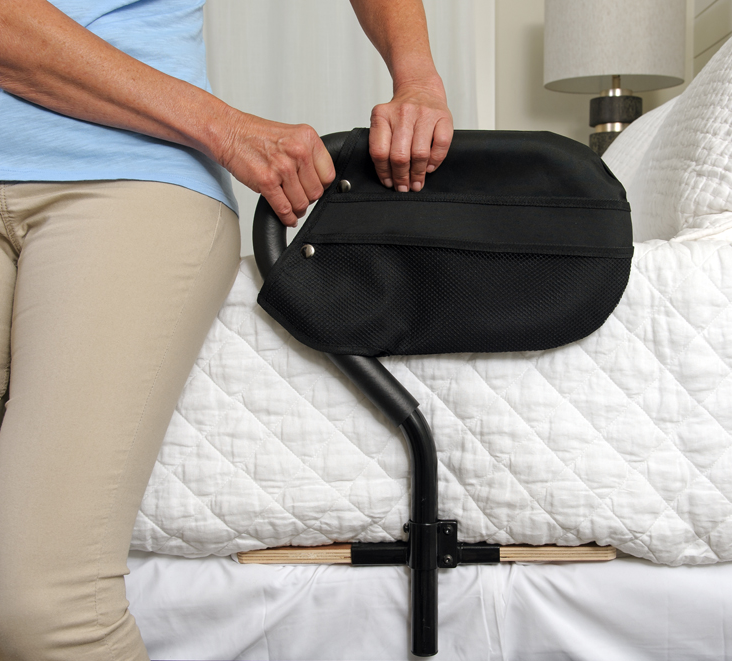

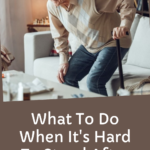
Great article, it is very important that people are able to get up from sitting down with ease. Otherwise, they may suffer from a decreased level of motivation to be more active. Although, I would like to point out something that has not been mentioned here. Specifically, the owning of mobility furniture designed for getting up and sitting down more easily. It is definitely vital to practice techniques for getting up as you won’t have access to the furniture everywhere, public places in particular. Nevertheless, I recommend that anyone here who could make use of this sort of furniture takes a look at some businesses that offer it.
I cut out the last paragraph of your comment, as we don’t accept website endorsements from guests. Plus, the website you highlighted was for a UK audience, while we’re focusing on American caregivers and seniors.
However, you do raise a good point. Mobility furniture is a powerful way to make sure that the home is more liveable. Getting furniture that’s designed for this purpose is much easier than trying to adapt furniture that one already owns.